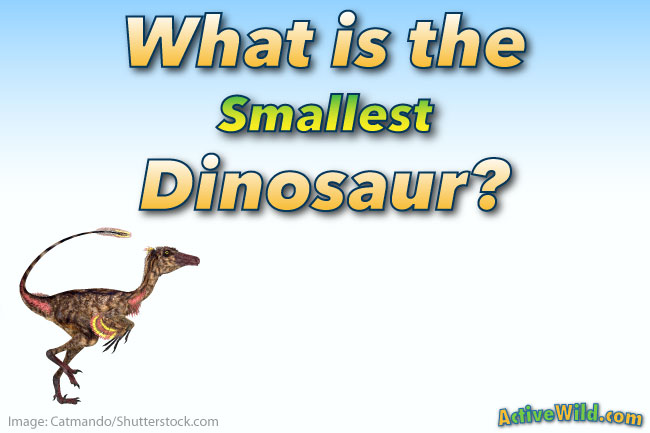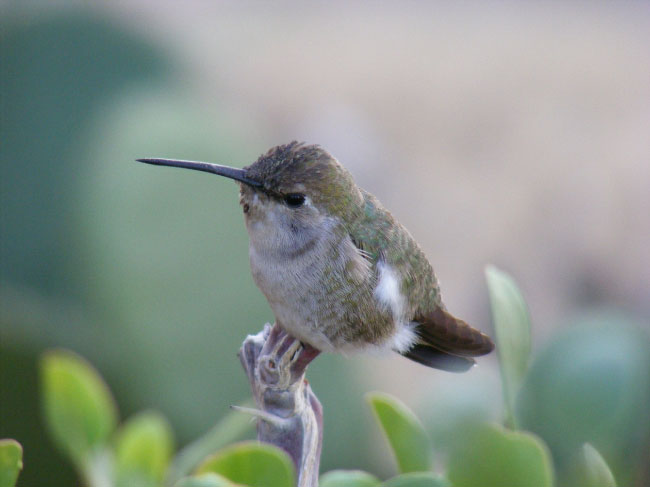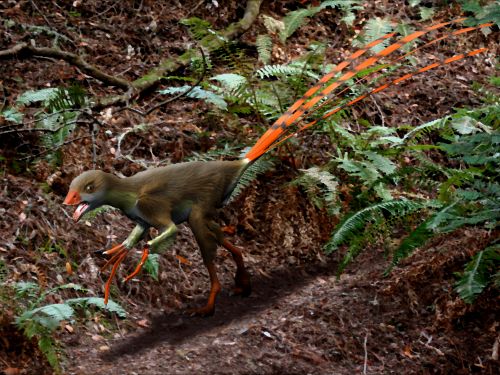What is the smallest dinosaur? Not all dinosaurs were giants! In this article we try to find out what was the world's smallest dinosaur.
This article is part of our Dinosaur Facts series.
What Is The Smallest Dinosaur?
When most people think about dinosaurs they imagine very big animals. However, there were plenty of dinosaurs that were the same size as – or even smaller than – humans.
Of course, if you’ve been following our Dinosaur Facts series, you’ll know that many scientists consider modern-day birds to be dinosaurs.
If we included birds in a ‘what is the smallest dinosaur’ top ten list, then there wouldn’t be any space for ‘real’ dinosaurs. Modern birds, such as the Bee Hummingbird (the smallest living bird) would fill up all of the top spots.
On this page, therefore, we’ll only include the ‘non-avian’ dinosaurs. That is, dinosaurs that didn't evolve into birds.
You will notice, however, that many of the smallest dinosaurs are very ‘bird-like’ in appearance, having feathers and wings.
How Can We Tell How Big (Or Small) Dinosaurs Were?
It is, of course, impossible to obtain accurate measurements of the size and weight of living dinosaurs.
One thing to remember when learning about dinosaurs is that nearly everything we know about them comes from fossils.
Dinosaur fossils are millions of years old, and most are incomplete.
Therefore scientists have to come up with estimates based on comparisons between the fossilized remains of dinosaurs and the skin, muscles, skeletons and body structures of living animals.
Scientists are extremely skilled at making these kinds of estimates. They can make educated guesses as to not only the size and appearance of dinosaurs, but also their diet and behavior.
However, until we invent a time machine, or create a real-life Jurassic Park, then there is no real way of knowing for sure how big or small dinosaurs were!
That being said, let’s meet some of the ‘babies’ of the Mesozoic era!
What Is The Smallest Dinosaur? A List
Anchiornis huxleyi
Anchiornis huxleyi was a tiny, long-legged, winged dinosaur. Covered in feathers, it is seen by many as an evolutionary link between dinosaur and bird. It lived in what is now China, in the late Jurassic period.
With long feathers found on both fore and hind limbs, Anchiornis huxleyi may have been a better glider than it was a flyer – if it left the ground at all!
One of the smallest dinosaurs yet discovered, Anchiornis huxleyi weighed between 110 and 700 grams (3.9 and 24.7 oz.) and was between 34 and 40 cm (13 and 16 in) in length.
Incredibly, scientists can even tell what color Anchiornis huxleyi was from pigment cells still present in fossilized specimens. They found that it was mainly dark grey and black, with a red crown and white stripes on its wings.
Anchiornis huxleyi is the only species in the genus Anchiornis. Anchiornis means ‘near bird’. The 'huxleyi' part of the species name is in honor of Thomas Henry Huxley. Huxley was an English biologist who helped to popularize Darwin’s Theory of Evolution. He was one of the first to identify the close relationship between dinosaurs and birds.
Epidexipteryx hui
Epidexipteryx hui was a small bird-like dinosaur. It lived in what is now Inner Mongolia in China around 160 to 168 million year ago, in the mid to late Jurassic period.
The most striking feature of Epidexipteryx hui was its four long tail feathers. Scientists think that these provided balance for climbing in trees rather than aiding flight. It is likely that Epidexipteryx hui would have been a glider if it left the ground at all.
Epidexipteryx hui belongs on a smallest dinosaur list, being only 44.5 cm (17.5 in) in length – including those long tail feathers – and weighing 164 to 391 g (5.8 to 13.8 oz.).
Compsognathus longipes
Compsognathus was once thought to be the smallest dinosaur. Discoveries of several smaller species means that Compsognathus no longer holds this title, but it is a fascinating dinosaur nonetheless.
Compsognathus was a small dinosaur that walked on its two hind legs. It was a theropod, which is a group of meat-eating dinosaurs that also includes – believe it or not – giants such as T Rex and Spinosaurus.
Compsognathus may have been covered in feather-like structures, as were several closely-related dinosaurs. However, no evidence has been found of this in any Compsognathus fossils.
Compsognathus is actually a genus, which in biology means a group of closely related species. However, there is only one species in the genus, Compsognathus longipes (the scientific names of species always have two words).
Compsognathus means elegant / dainty jaw. This turkey-sized mini-dinosaur was around 1 meter (3.28 ft.) in length, and weighed between 0.8 and 3.5 kg (1.8 and 7.7 lb.).
Compsognathus fossils have been found in Germany and France. It lived around 150 million years ago, during the Jurassic period.
Parvicursor remotus
Parvicursor, whose name means ‘small runner’, was a very small dinosaur with long, thin legs. In fact, everything we know about Parvicursor comes from one incomplete specimen consisting of just a pelvis and hind legs.
The only Parvicursor species is Parvicursor remotus. It lived in what is now Mongolia during the late Cretaceous period.
Parvicursor remotus could well be the smallest dinosaur yet discovered. It was around 39 cm (15 in) in length and weighed only 162 grams (5.71 oz.).
Microraptor zhaoianus
Microraptors were small, bird-like dinosaurs. They were among the first feathered dinosaurs to have been discovered. They had feathers on their arms and their legs, and have been described as ‘four-winged dinosaurs’.
It is thought that the largest Microraptors would have reached around 1.2 meters (3.93 ft.) in length.
Pigment cells have been found in Microraptor specimens. These indicate that Microraptors were black, possibly with an iridescent hue similar to that of the modern-day starling.
Whether or not Microraptors could fly – or were actually gliders – is unknown, but studies suggest that they were capable of true flight.
Over 300 Microraptor fossils have been found, and it is thought to have been one of the commonest dinosaurs in its ecosystem.
Although three Microraptor species have been described, it is thought that they all might actually be examples of the same species, Microraptor zhaoianus.
What Is the Smallest Dinosaur: Conclusion
In this article we’ve taken a look at five of the smallest dinosaurs known to man. Of these, either Anchiornis huxleyi or Parvicursor remotus could be considered the smallest. Of course, estimates as to their length and weight are just that – estimates – and we’ll probably never know what was the smallest dinosaur.
We hope that you’ve enjoyed reading about these small dinosaurs. If you want to become a dinosaur expert, check out some of our other dinosaur pages:
- You’ll find a complete guide to dinosaurs – from 'egg to extinction’ here: Dinosaur Facts.
- See how many different dinosaurs you know in our List of Dinosaurs.
- Don’t know your Jurassic from your Cretaceous? Learn all about the Mesozoic era here: Dinosaur Periods.








